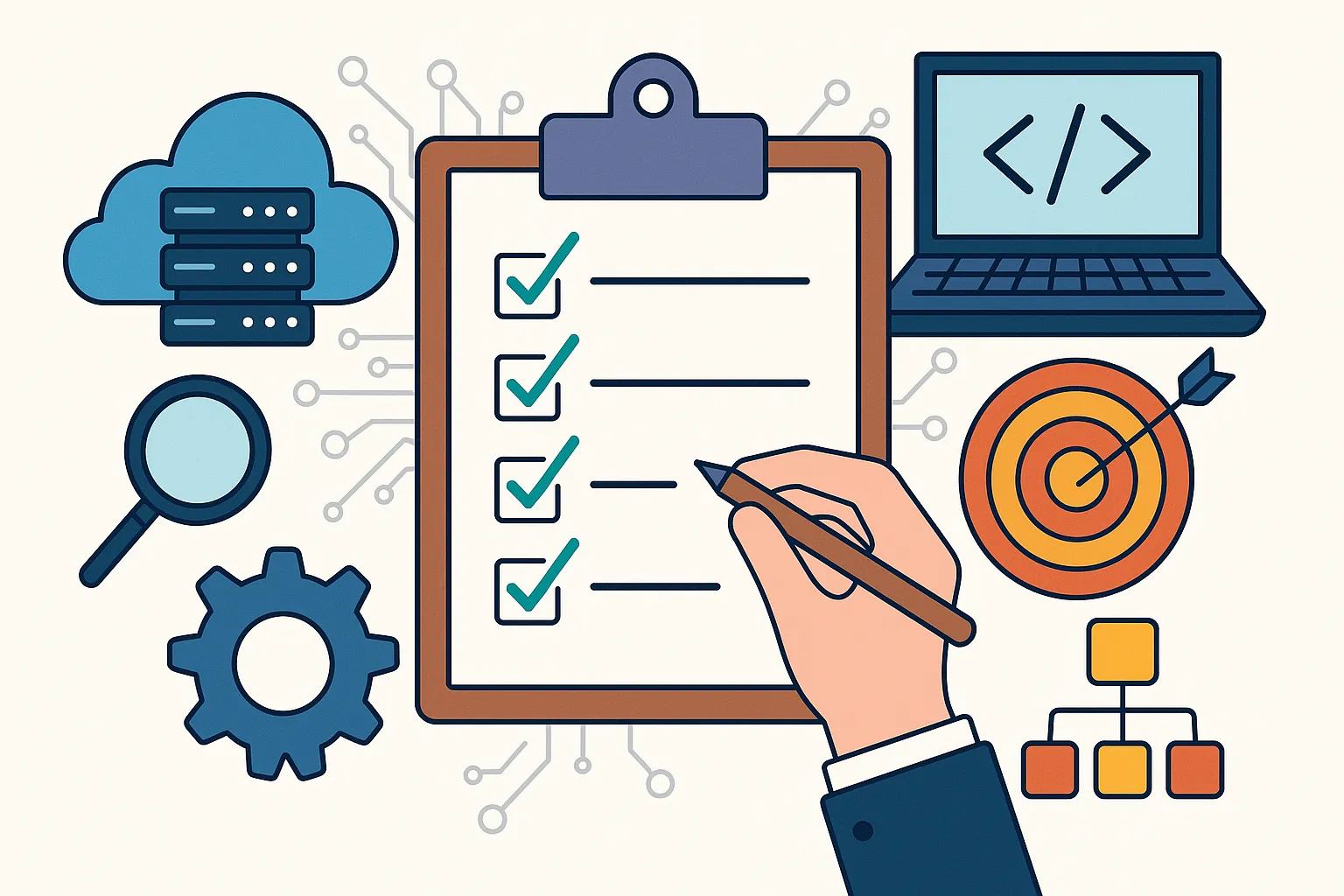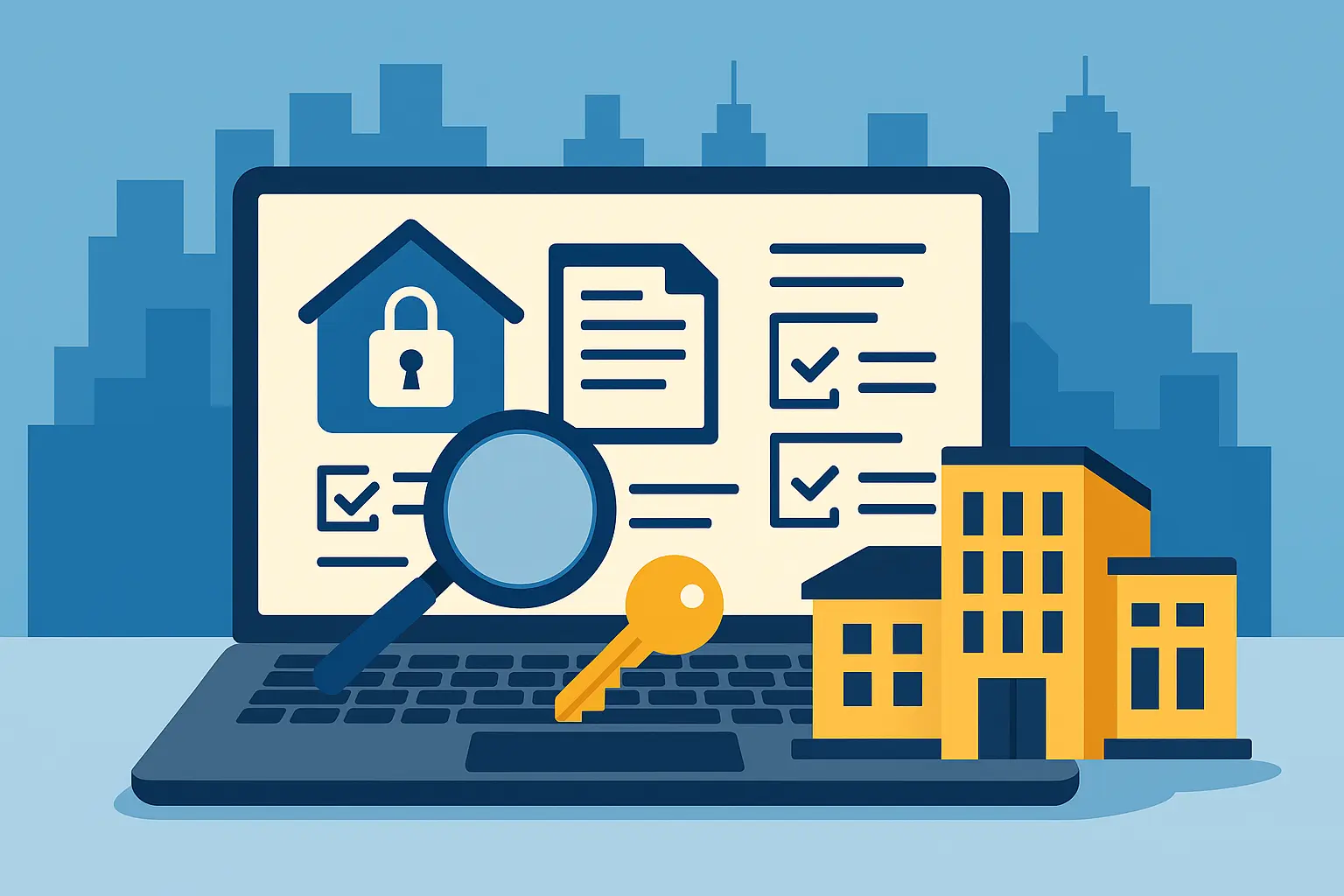Surprisingly or not, McKinsey states that only a small 11% of companies think their current business methods will work well after 2023. 64% of companies realize they need to start new digital initiatives to stay competitive.
While Deloitte states that digital transformation efforts were launched by 85% of CEOs during the pandemic, most companies still lack a clear and cohesive strategy as for the integration of AI, blockchain, machine learning, 5G, virtual reality, cloud, and many other technologies.
While technology keeps getting more integrated and complex, it’s still a crucial part of making businesses grow. Which is why technology should be a crucial part of due diligence in any merger and acquisition process. To ensure that, an IT due diligence is needed. Let’s find out why.
What is IT due diligence?
Tech due diligence, often referred to as tech DD or TDD, involves a thorough and unbiased examination of a product’s technical state. This encompasses the product’s code quality, decision-making processes, and risk assessment, all conducted prior to securing essential investments in a merger, acquisition, or divestiture.
Technology due diligence checklist covers a spectrum of technical facets within the project, encompassing such essential technical characteristics as:
- Infrastructure
- Applications and software
- Data management and cybersecurity
- Technical team and expertise
- Vendor and supplier relationships
- Intellectual Property (IP) and patents
- Financial considerations
- Other critical elements
The result is that you get an idea of the costs, investments, and possible benefits connected to the deal. It also gives you insights into growth and how scalable things could be for the target company.
IT due diligence goals and opportunities
The main goal of IT due diligence is to identify potential red flags for the business and its technology plans, which therefore allows to:
- Identify risks. Pinpoint potential technical and cybersecurity risks that could affect business operations or compromise data security.
- Assess compatibility. Evaluate the compatibility of the target company’s technology with the acquiring entity’s systems and strategies.
- Uncover opportunities. Discover opportunities for technology-driven improvements and innovations that could enhance the value of the investment.
IT due diligence process and preparation
To be ready for a technical due diligence process, it is recommended to go through the following essential steps:
- Documentation: Organize comprehensive documentation of your technology infrastructure, systems, software, and cybersecurity measures.
- Cybersecurity measures: Ensure robust cybersecurity measures are in place to protect sensitive data from breaches.
- IT strategy: Articulate your company’s business strategy, highlighting how IT activities align with business goals and growth plans.
- Compliance: Verify compliance with industry regulations and data protection laws.
- Team availability: Make key IT personnel available to answer questions and provide insights during the due diligence process.
Being well-prepared can streamline the due diligence process and enhance the confidence of potential investors or partners in your technology readiness.
IT due diligence checklist
Now, let’s take a look at a sample of a technical due diligence checklist. However, remember that the template below is quite generic.
Thus, our IT due diligence checklist might require some tailoring to align with the specifics of the due diligence process for your particular scenario.
| Aspect | Technology Due Diligence Checklist Items |
|---|---|
| Infrastructure | |
| Cloud and data centers | Location, capacity, redundancy, security measures, disaster recovery plans |
| Network architecture | Diagram, components, scalability, latency, bandwidth |
| Cloud services | Providers used, data migration strategy, security controls |
| Hardware and equipment | Inventory, condition, maintenance records, replacement schedules, patching procedures, associated costs |
| Business Applications Management | |
| Application portfolio | Business tools overview, usage purpose, usage notes, third-party dependencies |
| Software development | Coding standards, version control, software development lifecycle, release and product management planning |
| Custom software | List of proprietary applications, development framework, documentation quality, code efficiency, vulnerabilities |
| Off-the-shelf software | List of purchased software, security patches, customizations, secure programming practices |
| Licensing and compliance | Validation of software licenses, adherence to open-source licenses |
| Data Management & Cybersecurity | |
| Data storage | Location, type, security measures, scalability |
| Data protection | Backup and recovery plans, encryption, data retention policies |
| Data privacy and compliance | Adherence to GDPR, HIPAA, CCPA, and other relevant regulations |
| User access control | User roles, permissions, authentication methods |
| Cybersecurity measures | Firewalls, intrusion detection/prevention plans, security audits |
| Technical Team & Expertise | |
| IT personnel | Team setup, org chart, qualifications, retention strategies, business strategy, sprint planning |
| Skills and expertise | Assessment of technical skills and support systems |
| Knowledge transfer | Knowledge handover plans, system flows, user manuals, test case management |
| Incident response | IT risk mitigation, change management, business continuity, bug tracking |
| Vendor & Supplier Relationships | |
| Third-party contracts | IT vendor agreements, SLAs |
| Outsourced services | List of outsourced services, performance monitoring |
| Vendor security assessment | Evaluation of vendor security and compliance |
| Intellectual Property (IP) & Patents | |
| IP ownership and usage | IP ownership and usage rights for all software |
| Patent portfolio | Owned and licensed patents, applications in progress |
| Financial Considerations | |
| IT budget and expenditures | Past/current IT budgets, spending trends, forecasts |
| Technology ROI | Technology’s contribution to financial goals |
IT infrastructure evaluation
When examining IT infrastructure, it’s important to identify operational inefficiencies in policies and procedures. This involves evaluating the stability of data centers, network architecture, cloud services, and hardware. Hardware evaluation encompasses more than just infrastructure — it also includes personal devices.
Example: In the evaluation of hardware, personal devices should be thoroughly examined. Are you aware of all the information accessible to remote employees? Do they operate within secure home networks, public workstations, or other environments where encryption channels are necessary? Also consider any replacement schedules, maintenance practices, and patching procedures as part of hardware evaluation.
Applications and software examination
An assessment of software encompasses proprietary applications, intellectual property, and the processes involved in software development and documentation, which encompass both open-source components and enterprise applications. Key inquiries to address include:
- Is the software currently receiving support?
- Are these software solutions integral to business functions?
- What are the associated costs, and are contractual agreements established?
Example: in the evaluation of packaged software, considerations should include software versions, security patches, any customizations made, as well as the integration processes. When dealing with proprietary software, the focus shifts towards scrutinizing the development framework, the quality of documentation, code efficiency (and potential vulnerabilities), and the platforms that rely on said software.
Data management and cybersecurity
For preventing data breaches and leaks, conducting a comprehensive examination of data management practices and cybersecurity protocols is essential. Within this domain, several aspects come into play, including data storage and protection practices and cybersecurity methods such as firewalls, disaster recovery plans, vulnerability tests, etc.
Additionally, the evaluation extends to the handling of personal data and, where relevant, compliance with HIPAA regulations.
Technical team and expertise
Personnel can represent both an asset and a potential liability, much like the absence of established and clear procedures.
Example: When evaluating your IT personnel and operations, it’s essential to consider the skill set, knowledge transfer, and roles distribution within your IT team. Key takeaways during the evaluation of both business operations and IT staff encompass supplier and vendor management, the leadership in the IT domain, the efficacy of service delivery, project portfolio management, allocation of IT expenditure, and the accumulation of technical debt.
Vendor and supplier relationships
Vendor and supplier due diligence is a critical part of IT due diligence, focusing on assessing external partnerships. This process reviews third-party contracts, ensuring alignment with business needs, along with monitoring service-level agreements. It identifies outsourced IT services and evaluates their performance for operational efficiency. Additionally, vendor security assessments are conducted to gauge the security measures and compliance of external partners.
The main goal is to mitigate risks, optimize partnerships, enhance data security, and ensure operational continuity.
IP and patents
IP and patent due diligence is a vital component of IT due diligence, focusing on safeguarding IP assets. This process clarifies IP ownership and usage rights concerning software and technology while assessing the organization’s patent portfolio, including owned, licensed, and pending patents.
The main goal is to secure IP rights, mitigate legal risks, and uncover innovation opportunities. Key takeaways include protecting against disputes, managing legal risks, gaining insights into innovation efforts, and informing strategic decisions for sustained competitiveness.
Financial considerations
Last but not least, financial considerations are also pivotal in IT due diligence, as they focus on assessing the financial impact of technology investments. This evaluation examines historical and planned IT budgets, as well as technology’s Return on Investment (ROI), to ensure alignment with the company’s financial goals.
The goal is to optimize budget allocation, enhance cost-effectiveness, and make strategic decisions that maximize technology’s financial value.
How virtual data rooms boost IT due diligence
Virtual data rooms offer several essential functionalities that greatly assist with technical diligence during M&A activities:
- Centralized data storage: Virtual data rooms provide a secure and centralized repository for storing all relevant IT-related documents, such as infrastructure diagrams and software documentation. This ensures that all crucial information is easily accessible to authorized parties.
- Access control and permissions: Virtual data rooms allow administrators to set granular access controls and permissions. This feature ensures that only authorized individuals can view, download, or edit specific IT-related documents, maintaining confidentiality and security.
- Collaboration tools: Collaboration features like commenting, annotations, and Q&A sections enable IT experts, auditors, and stakeholders to communicate, share insights, and clarify technical aspects directly within the virtual data room environment.
- Audit trails: These platforms generate detailed audit trails, logging all user activities within the data room. This transparency enhances accountability and provides a verifiable record of who accessed what information and when.
- Secure data room closure: Once the due diligence is complete, virtual data rooms offer the ability to securely close or archive the data room, ensuring that confidential IT information remains protected even after the transaction concludes.
Best Virtual Data Rooms for IT Due Diligence in 2025
iDeals
- Granular access permissions
- Audit-ready document tracking
- Secure Q&A and collaboration tools
- Comprehensive reporting features
DealRoom
- Task & checklist management
- Real-time version control
- API & audit logs
- Secure uploads & reviews
Intralinks
- Enterprise-grade security
- AI-powered redaction
- Advanced analytics
- Global compliance support
In summary, virtual data rooms streamline and enhance the IT due diligence process by providing a secure, organized, and collaborative environment for evaluating technical aspects during M&A activities.
Read more about this: Data Room Checklist: How to Structure Your VDR for M&A Transactions
Key takeaways
Now, let’s summarize the key findings from the article:
- IT due diligence is crucial for all M&A transactions. It involves a thorough assessment of a product’s technical characteristics, encompassing code quality, decision-making processes, and risk evaluation.
- The IT due diligence checklist covers various technical facets, including infrastructure, applications and software, data management, and cybersecurity. These evaluations provide insights into costs, investments, benefits, and scalability potential, helping shape investment strategies and decisions.
- Virtual data rooms offer a secure and collaborative environment that enhances IT due diligence processes. With strong data room security features like centralized storage, granular access controls, real-time monitoring, and encrypted data sharing, these platforms streamline collaboration and improve the overall efficiency and integrity of due diligence assessments.



